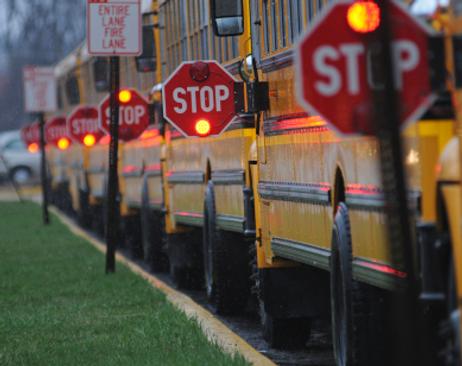The school bus has been a popular mode of transportation for students of all ages for generations - so much so that a week every year has been set aside to focus on the safety of these big yellow vehicles. School Bus Safety Week kicked off this month across the country, and many school districts got into action with school assemblies, events, and reminders to students, drivers, and motorists to keep students safe while they are on the road. We’ll take a look at a few of the school bus events taking place nationwide and a few facts about school buses that you may not know.
The History of School Bus Safety Week
The first School Bus Safety Week was established in 1963 for the state of California, according to the West County Transportation Agency website. The creator of that event, Dick Fischer, took his cause national by 1970, distributing a flyer of information to state directors of transportation across the country. The movement slowly gained momentum until hundreds of school districts from coast to coast began celebrating this week by emphasizing school bus safety for drivers, students, parents, and other motorists sharing the road with these bright buses. Today, the movement is coordinated by the National Transportation Association and the National Association for Pupil Transportation, and it is held the third week in October each year.
A national poster contest is held each year to allow students nationwide to submit designs for the annual promotional poster advertising the week. Some school districts also feature their own poster contests, which are displayed locally. Other districts might put together flyers or booklets to inform parents, students, and other interested parties about traffic rules and other important facts about school buses. In some areas, School Bus Safety Week is all about fun and education, with special assemblies and other events scheduled to teach the public about school bus safety and remind them to acknowledge those saddled with the responsibility of ensuring students make it to and from school safely every day.
This video offers an overview of school bus safety.
Missouri School District Uses Entertainment to Teach Safety
One school district in Missouri takes School Bus Safety Week to a new level, intertwining sheer entertainment with plenty of education. The Jones County School District features Buster, the Talking School Bus, a remote-controlled vehicle that travels from school to school, teaching students about the importance of school bus safety. Buster is directed by his sidekick, Bryan Nash, a transportation professional with more than 30 years of experience in the field.
According to a report at the Laurel Leader-Call, Nash was recruited into Jones County by the transportation director of the district, Terry Graham. Graham originally met the two at a meeting in Hattiesburg and thought they would make a good fit for the week-long event in Jones County. Nash and Buster have been appearing at Jones County schools ever since.
“It’s something we’ve done for years,” Graham told the Leader-Call. “We will have a poster contest and we will also give gifts to our bus drivers and ask the kids to write notes to them.” In addition, assemblies featuring Nash and Buster are always a hit with the kids.
This video offers a kid's perspective on school bus safety.
Hazards of Inattentive Motorists
While School Bus Safety Week is a fun event for many school districts, the primary purpose of the week is to focus on making this public mode of transportation as safe as possible for students. According to a report at the Westminster Patch, one of the greatest safety risks school bus drivers face daily is the motorist who fails to stop at the flashing red lights on the bus because he is texting or talking on his cell phone.
“I think a lot of people aren’t always aware that the sign is out and they just continue to go around, not thinking that the small child may run to the front or the back of the bus,” Tricia Hoffman, coordinator for the Safe Kids program at the Three Rivers District Health Department told the Fremont Tribune.
However, cell phones are not the only hazard keeping motorists from giving school buses the respect and courtesy they require.
“As drivers, we’ve got to keep in mind weather conditions, because if it’s raining, the visibility might be a little less,” Fremont police officer Lt. Kurt Bottorff told the Tribune. “One of the problems we have in early fall is the glare from the sun and it’s harder to stop. Like anything else, we just need to slow down, especially if you’re behind a bus or approaching a bus.”
Safest Trip in Town
Despite the hazards facing school buses today, they are still considered safe for students, according to a statement by California Highway Patrol officer Jeffrey S. Butticci in the Merced Sun-Star. Butticci is the school bus coordinator and training officer for 14 northern Merced County school districts.
“School buses are by far the safest mode of transportation,” Butticci told the Sun Star. “They [school bus drivers] are top-notch, second to none, when it comes to safety. They are the most highly trained drivers in California. I’ve never had any complaints about school bus drivers...On average, school bus drivers have 60 to 70 hours of training, and every five years they have to go through the testing procedure.”
This month, those who are in charge of those big yellow buses – and the students who ride them – get a bit of the recognition they deserve for keeping our kids safe on the road every day.
Questions? Contact us on Facebook. @publicschoolreview












